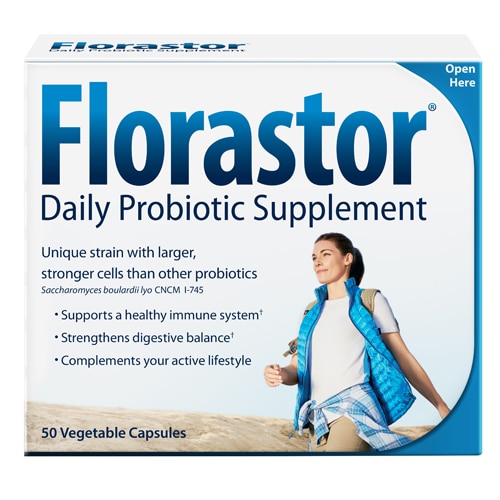Every advertising agency will tell anyone manufacturing a product … include some probiotic and your sales will improve. There is no need to show any evidence that it makes any health impact, popular internet myth will sell it!
A reader toss this product at me– which to her looks good. It hits most of the advertising advice: cite organic. cite probiotics. cite human probiotics for extra selling power! Includes superatives with no real meaning — like potent.

What should a label contain?
A 2011 study is a good starting point: Assessment of commercial probiotic bacterial contents and label accuracy which stated:
If an adequate label is defined as one that contains specific (and valid) bacterial names (genus and species), with no spelling errors and a clear statement of number of viable organisms that are expected, then only 8 (32%) products were properly labeled. If a more stringent definition of an adequate label is used, which includes a requirement that the product identify the specific bacterial strain that is present, then no products were adequately labeled.
Manufacturer can states that there is probiotics in a product without one single living probiotic bacteria being in the product after manufacturing. Food stabilizers, mishandling and preservatives will often kill off these bacteria quickly. “Only 4/15 (27%) products that had specific claims of viable organisms met or exceeded their label claim.” The rest of the products did not claim any viable organism (which the product shown above makes no claim for viable organism).
How much is needed to be healthful?
“It has been suggested that probiotic products should contain at least 107 CFU per ml or g ” [2001] . i.e. 10 million CFU
If we look at some probiotics on the market we see 400,000 million CFU/g

So, 1 gm of the above probiotic in 40,000 gm of ice cream (that is 40 kilograms or 88 lbs!) would reach that criteria – a very low bar.
They may be telling fairy tales about the contents!
“Organisms were improperly identified in 9/21 (43%) human and 8/23 (35%) veterinary products. Contents of 5/20 (25%) human and 3/17 (18%) veterinary products were misspelled. In only 9 human and 2 veterinary products were the contents adequately identified.” [2003]
“Studies organized worldwide and summarized in this article have shown that inconsistencies and deviations from the information provided on the product label are surprisingly common. Frequently strains are misidentified and misclassified, products are occasionally contaminated, sometimes with even facultative or obligatory pathogens, strains are not viable, the labeled number of colonies cannot be verified, or the functional properties are diminished to the extent that preclude the proposed health benefit. ” [2017]
My Source Choices
Given that most advertised probiotics are very questionable, I tend to single strain providers. Often they own the rights to their specific strains, have research papers published with their explicit product/strains and thus have a strong vested interest in keeping their product honest. They include:
- Mutaflor (E.Coli Nissle 1917)
- Symbioflor 1
- Symbioflor 2
- Custom Probiotics
- Miyarisan (Clostridium butyricum)
- Bioflorin
- Enterogermina
- Reuteri gotas
Many manufacturers are focused on claims that results in better sales. They are not serious probiotics researchers or developers. They are serious entrepreneurs sensitive to what sells.
Example of a Good Label and Product

Saccharomyces boulardii CNCM I-745 250 mg
My first step for evaluation is to search on PubMed for studies. The ones that interest me are:
- Saccharomyces boulardii CNCM I-745 modulates the microbiota-gut-brain axis in a humanized mouse model of Irritable Bowel Syndrome [2020]
- “Antibiotic-associated diarrhea (AAD) showed a robust preventative correlation with three strains: Saccharomyces boulardii I-745, three lactobacillus strains (L. acidophilus CL1285 + L. casei Lbc80r + L. rhamnosus CLR2), and Lactobacillus casei.” [2020]
- Modeling the Ethanol Tolerance of the Probiotic Yeast Saccharomyces cerevisiae var. boulardii CNCM I-745 for its Possible Use in a Functional Beer [2020]
- Saccharomyces boulardii CNCM I-745: A Non-bacterial Microorganism Used as Probiotic Agent in Supporting Treatment of Selected Diseases [2020]
etc… This is a yeast, not a bacteria, (thus viable units is not an issue). It does illustrate what you should demand to see before buying any probiotics. Hard studies with positive effect!
